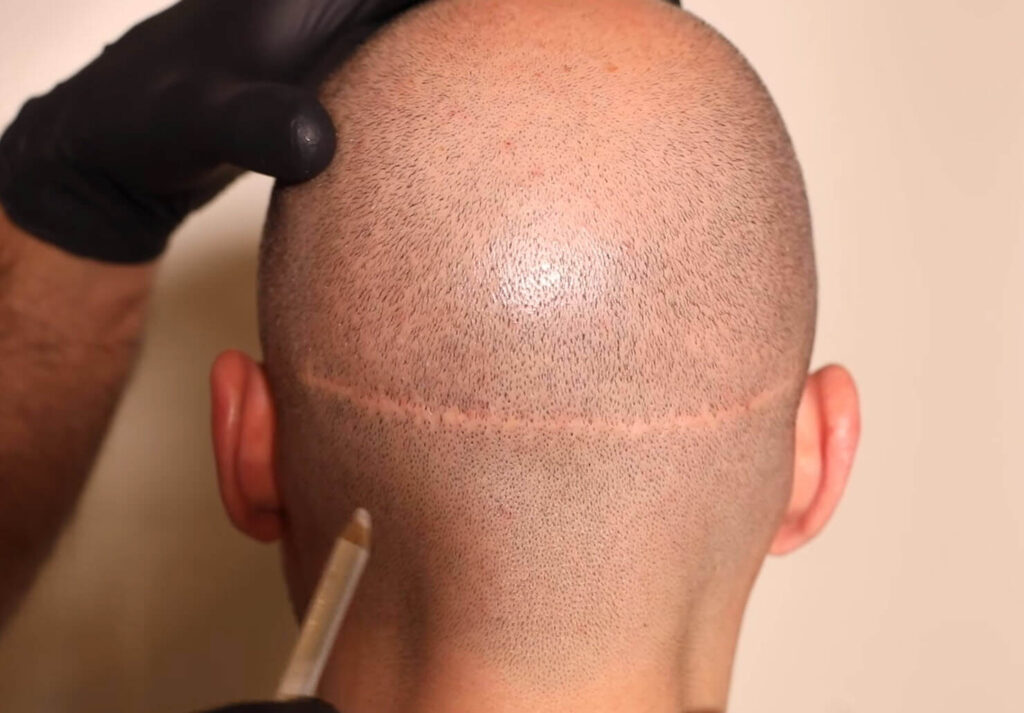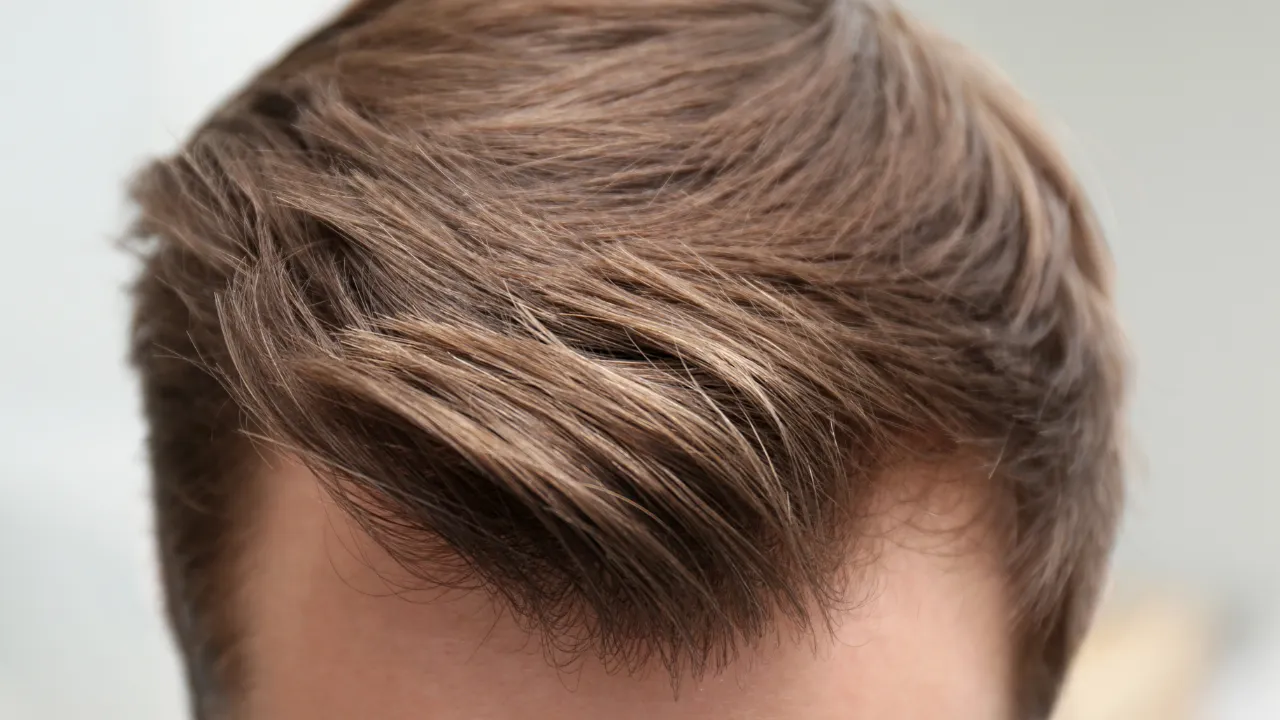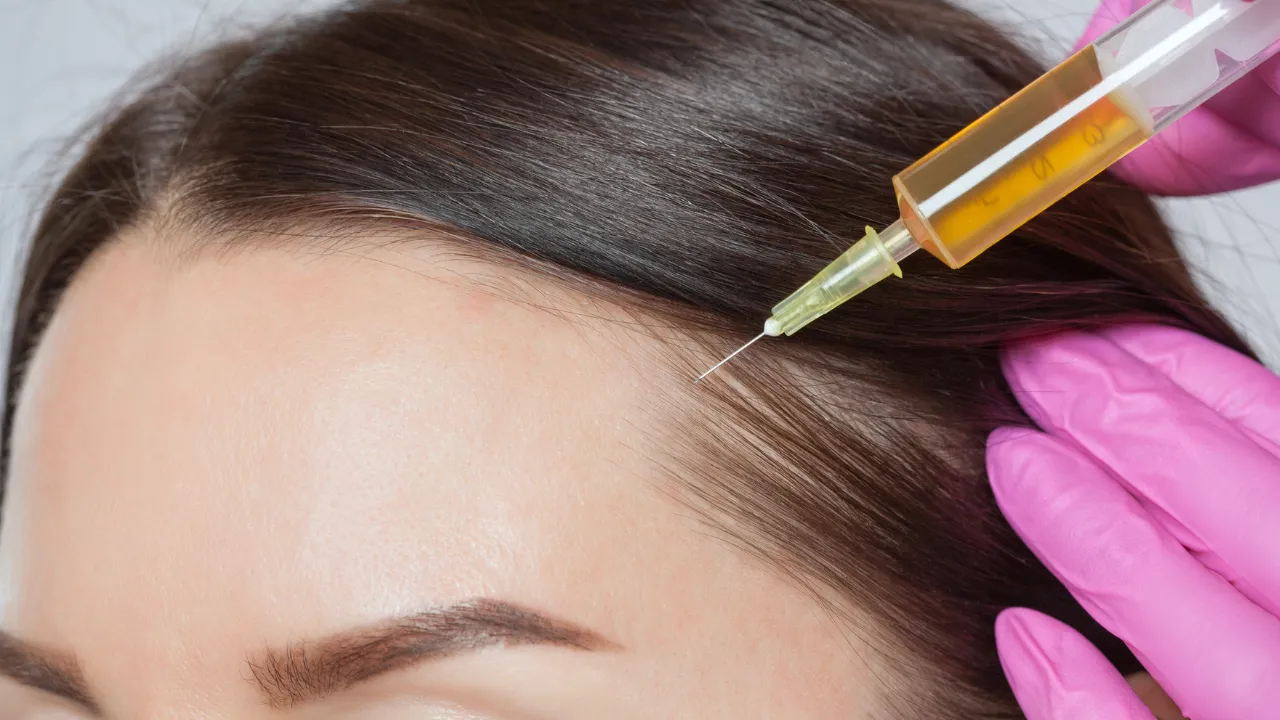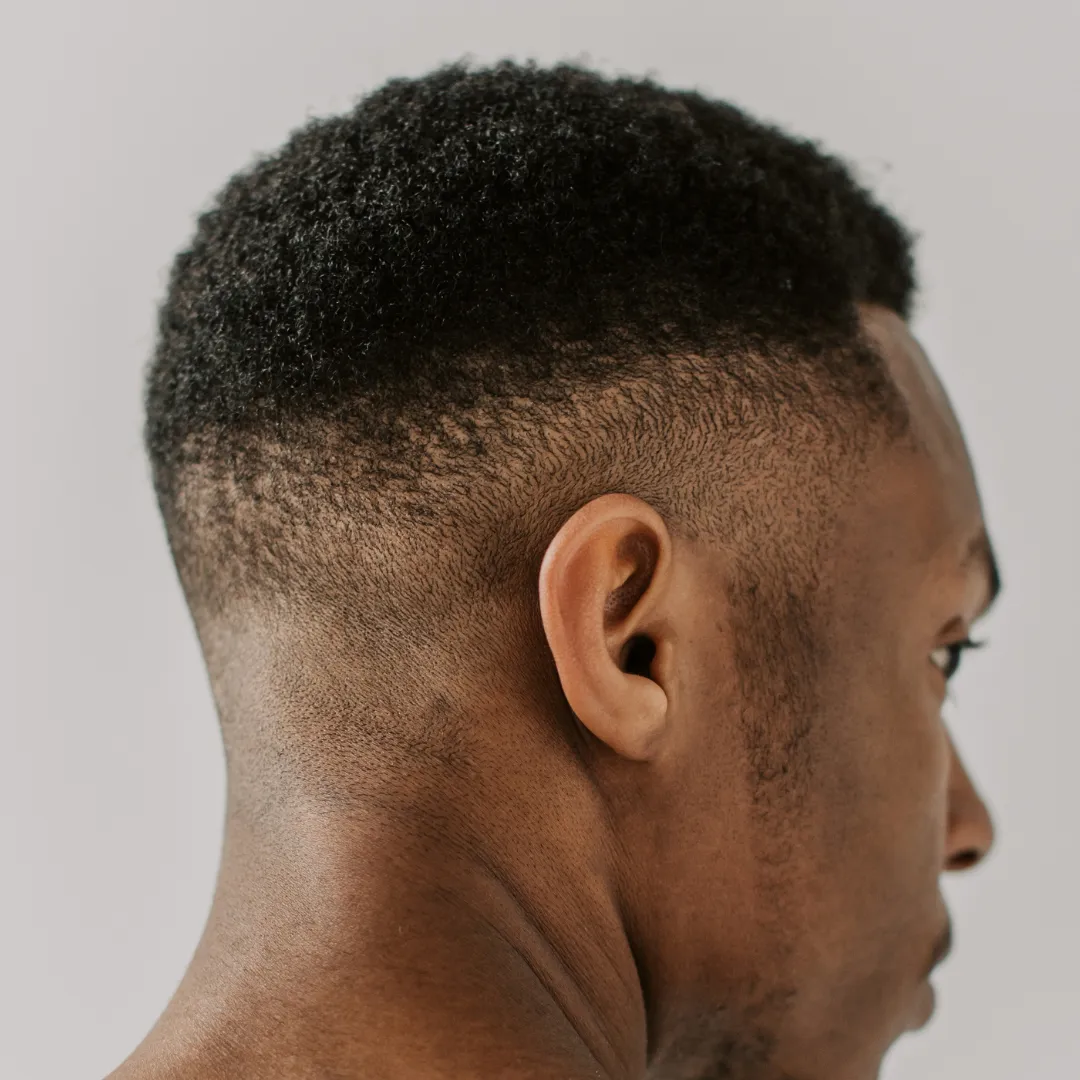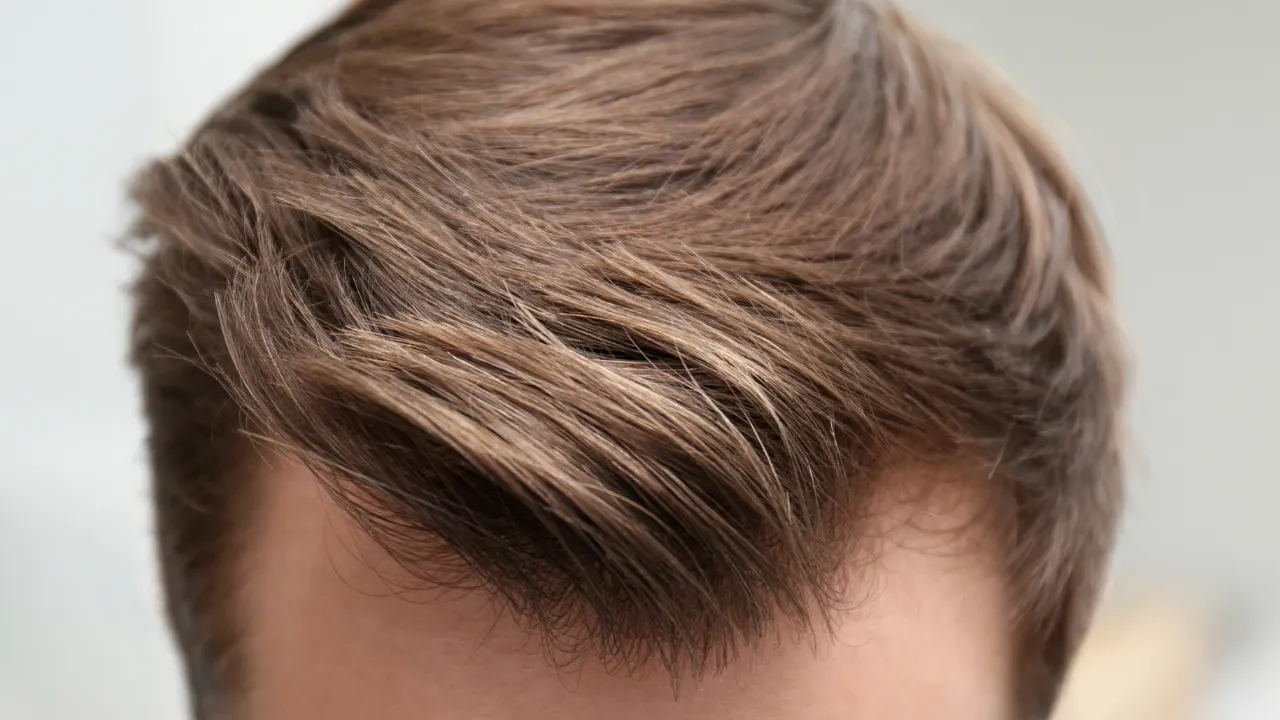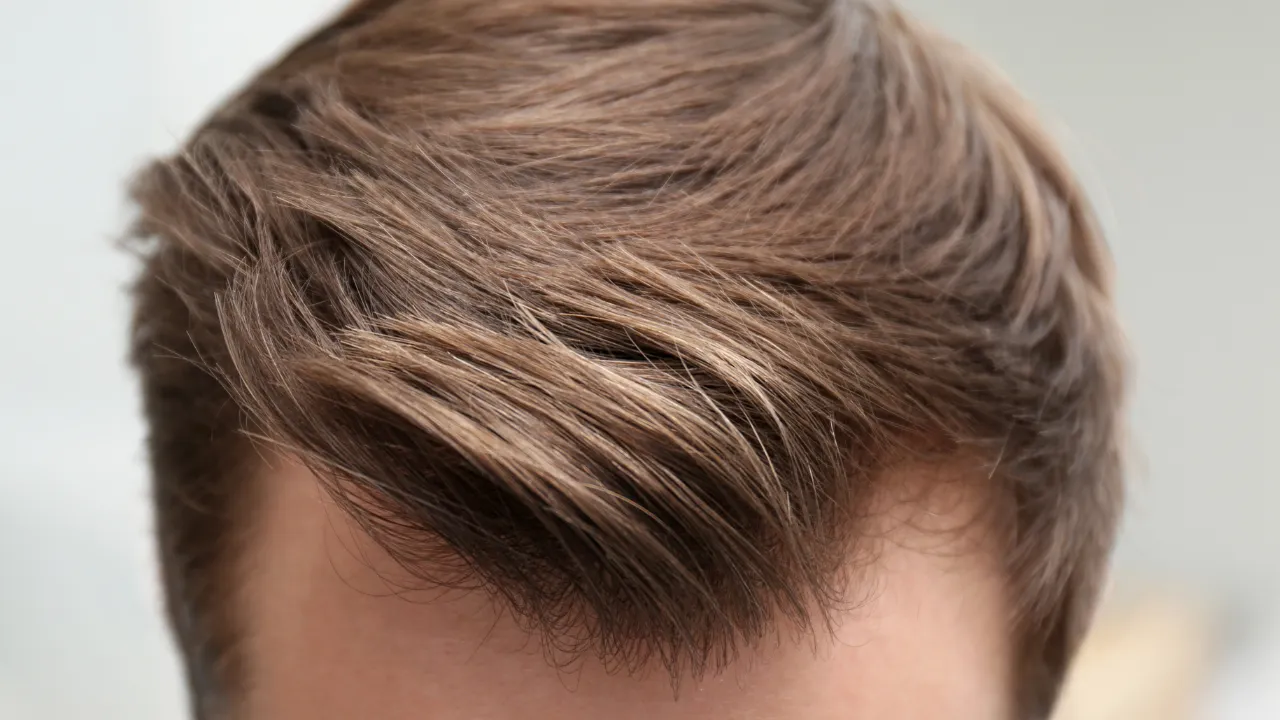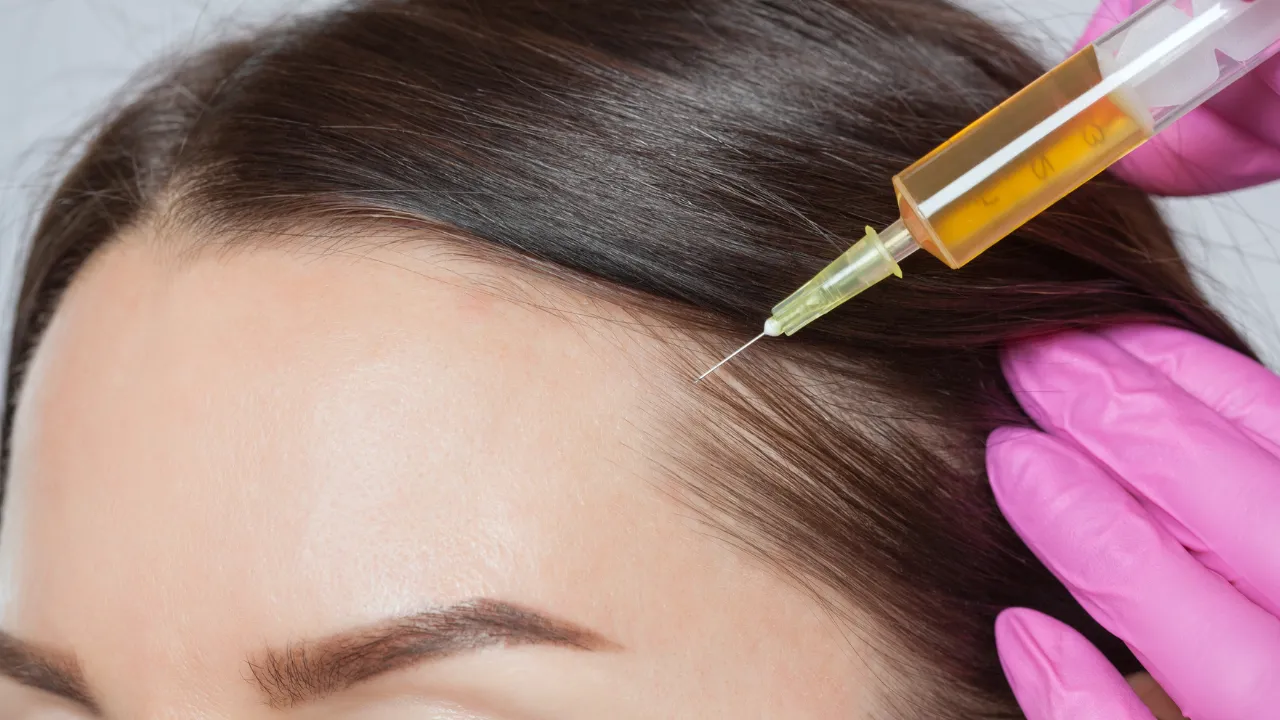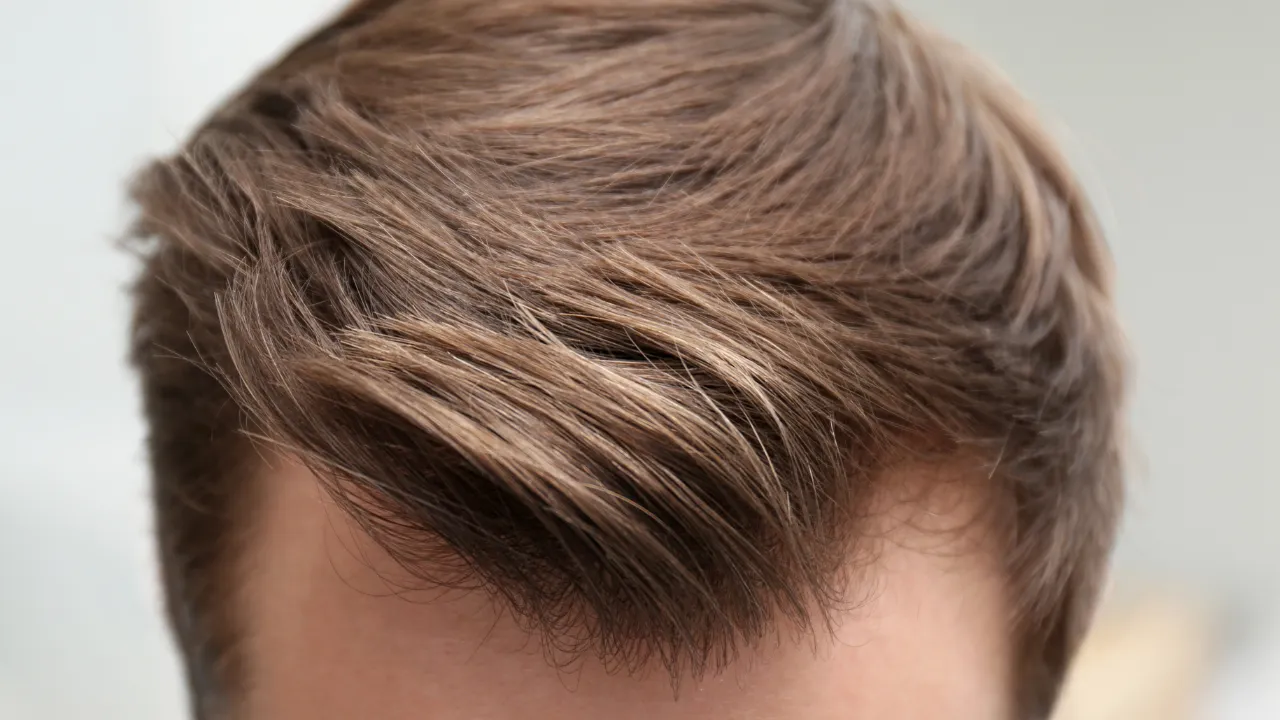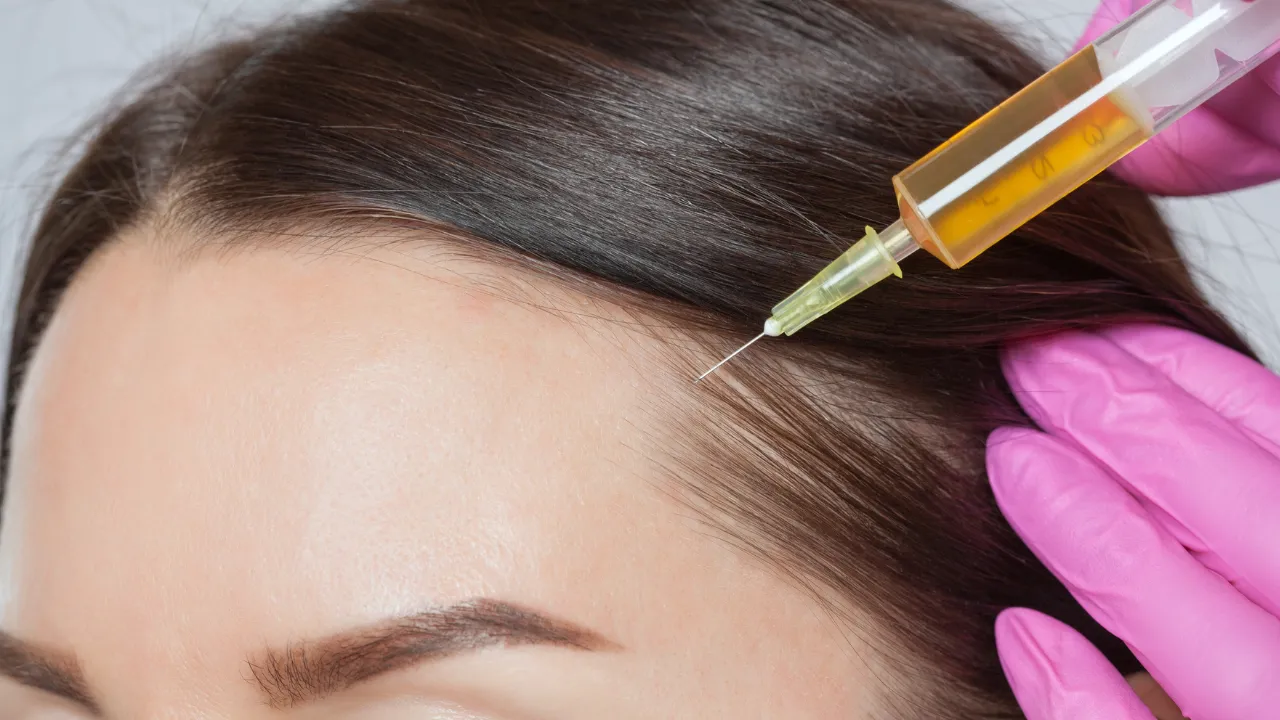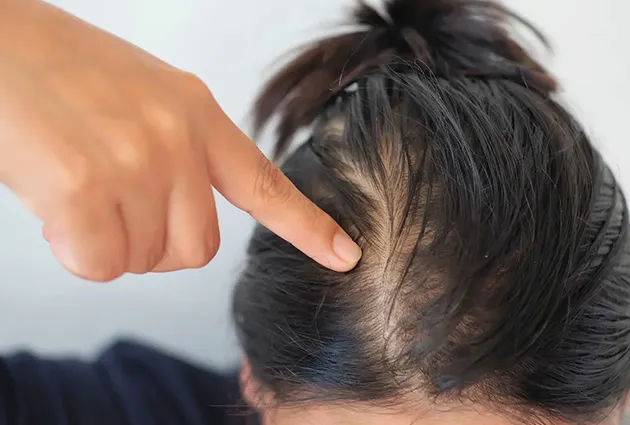Transplanting hair into scars is a solution for those looking to camouflage scars with natural-looking hair growth. This method, particularly vital for concealing scars from Follicular Unit Transplantation (FUT) or other injuries, stands as a beacon of hope, not only restoring hair but also significantly enhancing self-esteem.
Scar Tissue and Hair Transplantation
Scar tissue forms as a natural part of the body’s healing process, replacing normal skin after injury, surgery, or inflammation. Unlike healthy skin, scar tissue lacks hair follicles, which leads to visible bald spots that can be a source of discomfort for many. The advent of hair transplantation techniques, particularly Follicular Unit Extraction (FUE), has made it possible to introduce hair into these areas, offering a semblance of the original hair density and appearance.
The success of transplanting hair into scar tissue hinges on several critical factors, including the characteristics of the scar (its type, age, and location) and the overall health and characteristics of the patient’s scalp. For example, scars that are flat, less pigmented, and located in areas with ample donor hair are more amenable to successful transplantation.
Camouflaging FUT Scars with Hair Transplantation
A common concern among individuals who have undergone Follicular Unit Transplantation (FUT) is the visibility of the linear scar left by the procedure. FUT, while effective, involves removing a strip of skin from the back of the head to harvest hair follicles, resulting in a scar that can be conspicuous when the hair is worn short.
Camouflaging an FUT scar involves transplanting hair follicles directly into the scar tissue to make it less perceptible. This requires a nuanced approach to ensure that the transplanted hair grows in a direction that blends seamlessly with the surrounding hair, thereby minimizing the appearance of the scar. The FUE method is particularly well-suited for this purpose, as it allows for the precise placement of individual follicles.
Transplantation Process
When contemplating hair transplantation into a scar, including FUT scars, it’s imperative to consider the unique challenges posed by scar tissue. Scar tissue is less vascularized than healthy skin, meaning it has a lower blood supply, which can impact the nourishment and growth of transplanted follicles. Therefore, the expertise of the surgeon and the health of the donor area become paramount in ensuring the success of the procedure.
A thorough consultation will involve an evaluation of the scar’s characteristics, the availability and quality of donor hair, and the patient’s overall health and expectations. This assessment is crucial for devising a strategy that maximizes the chances of successful hair growth within the scar.
The transplantation process is meticulous, requiring the surgeon to make tiny incisions in the scar tissue to insert the harvested follicles. This task demands precision to ensure that the follicles are placed at the correct angle and depth to mimic natural hair growth patterns. The procedure typically takes place under local anesthesia, and while it is minimally invasive, patients should expect a recovery period during which the scalp heals and the transplanted hair takes root.
Post-Procedure Care and Realistic Expectations
After the procedure, patients may experience some swelling, redness, and discomfort, which generally subside within a few days. Adhering to post-operative care instructions, such as avoiding rigorous activities and direct sunlight, is crucial for ensuring the best outcome. It’s also normal for the transplanted hair to shed in the weeks following the procedure; this is part of the natural hair growth cycle and not a cause for alarm.
Setting realistic expectations is key to a satisfactory outcome. While hair transplantation can significantly improve the appearance of scars, including FUT scars, it may not always be possible to achieve complete coverage or perfect density. The goal is to create a more natural and less noticeable appearance of the scar, which can greatly enhance the patient’s confidence and comfort.
Hair transplantation into scar tissue, particularly for camouflaging FUT scars, represents a significant advancement in cosmetic surgery. It offers individuals the chance to conceal scars effectively, promoting not only aesthetic improvement but also emotional well-being. The success of such procedures lies in the skill and expertise of the surgeon, the quality of the donor hair, and the patient’s adherence to post-operative care. With realistic expectations and proper planning, hair transplantation can be a transformative solution for those looking to minimize the visibility of scars and reclaim their appearance.


